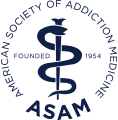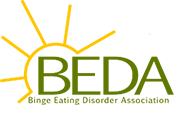Most individuals have insecurities about their bodies and overall appearance. For instance, one might not like the look of her nose, hairline, or weight, which can be somewhat normal. However, those who have body dysmorphic disorder (BDD) experience tremendous distress regarding their bodies.
Understanding Body Dysmorphic Disorder
Learn about body dysmorphic disorder
The most common worries of those who have body dysmorphic disorder come from the appearance of their hair, skin, nose, and other body parts or features.
Men who struggle with BDD often do so in a manner where they develop an intense desire to build massive amounts of muscle, leading to the development of dangerous eating patterns and possibly even steroid use. Women who are afflicted with BDD often develop poor eating habits, over-exercising behaviors, and/or other behaviors that will help them change their physical appearance. Both sexes often turn to extremes, such as plastic surgery. Those who have BDD tend to struggle with extreme self-consciousness, and they might be so anxious and self-conscious that they flee social contact, and possibly consider suicide. Since BDD includes extreme discomfort with one’s body and appearance, those who suffer with this disorder can easily struggle with an accompanying eating disorder.
While the challenges of BDD might feel continual, it is possible to overcome the symptoms of this disorder with treatment and live a happy, healthy life.
Statistics
Body dysmorphic disorder statistics
Nationwide, roughly 1% to 3% of individuals have been diagnosed with this condition, and these numbers can vary depending on whether they include up to a maximum of 53% of those in cosmetic surgery settings. However, some studies show that these numbers might not be exact, as slightly more than 30% of those in inpatient settings report feeling too embarrassed to discuss their bodily insecurities with others.
Causes and Risk Factors
Causes and risk factors for body dysmorphic disorder
The exact cause of BDD is still being researched. However, most experts agree that it is brought on by a number of genetic and environmental factors, such as:
Genetic: Studies suggest that an individual’s genetics can play a major role in his or her likelihood of developing this specific mental health condition. Those who have first-degree relatives with this disorder are more likely to develop it.
Environmental: Environmental factors, such as having negative experiences surrounding one’s body image, being teased in childhood, having parents who were focused on body-image, and additional social pressures can all lead to one developing BDD.
Risk Factors:
- Personal history of mental illness
- Obsessive-compulsive traits
- Other mental illness
- Family history of mental illness
- Personality factors, such as low self-esteem
Signs and Symptoms
Signs and symptoms of body dysmorphic disorder
The signs and symptoms that one with BDD might exhibit can vary based on factors such as individual history and personality. However, some of the most common symptoms of BDD can include:
Behavioral symptoms:
- Excessive spending on beauty products
- Other idiosyncratic behaviors, such as drinking water to make one’s face appear fuller
- Extreme exercise routines
- Seeking reassurance from others about physical appearance
- Picking at one’s skin
- Excessive grooming, exercise, and hygiene behaviors
- Disguising certain body parts with clothing
- Frequently checking the mirror
Physical symptoms:
- Medical conditions, such as diabetes or malnutrition, from poor eating habits
- Scabs and infection from picking at skin
- Weight changes due to excessive exercise or unhealthy eating
- Complications from cosmetic surgery
Cognitive symptoms:
- Poor attention and concentration
- Distractibility
- Poor memory due to an inability to focus
Psychosocial symptoms:
- Suicidal thoughts
- Poor relationships
- Avoidance of social situations due to fear of ridicule
- Poor self-esteem
Effects
Effects of body dysmorphic disorder
BDD is a significant condition that can produce a number of dangerous effects in an individual’s life if it is not treated. Some of these effects can include:
- Development of a co-occurring mental health disorder
- Suicide attempts
- Side effects of steroids including breast development, shrunken testicles, and infertility in men, and deeper voice, increased body hair, and infrequent periods in women, as well as acne, tendonitis, tumors, and aggressive behaviors in both sexes
- Loss of relationships
- Poor performance at work or school
- Repeated hospitalizations
- Medical conditions due to a lack of proper nutrition
- Loss of a job
Co-Occurring Disorders
Body dysmorphic disorder and co-occurring disorders
Those who grapple with BDD tend to also battle with other mental health conditions at the same time. Sadly, those who have BDD are more likely to develop an eating disorder like binge-eating disorder, anorexia nervosa, and bulimia nervosa. Some other common co-occurring disorders can include:
- Posttraumatic stress disorder
- Personality disorders
- Bipolar disorder
- Depressive disorders
- Anxiety disorders
- Obsessive-compulsive disorder

























